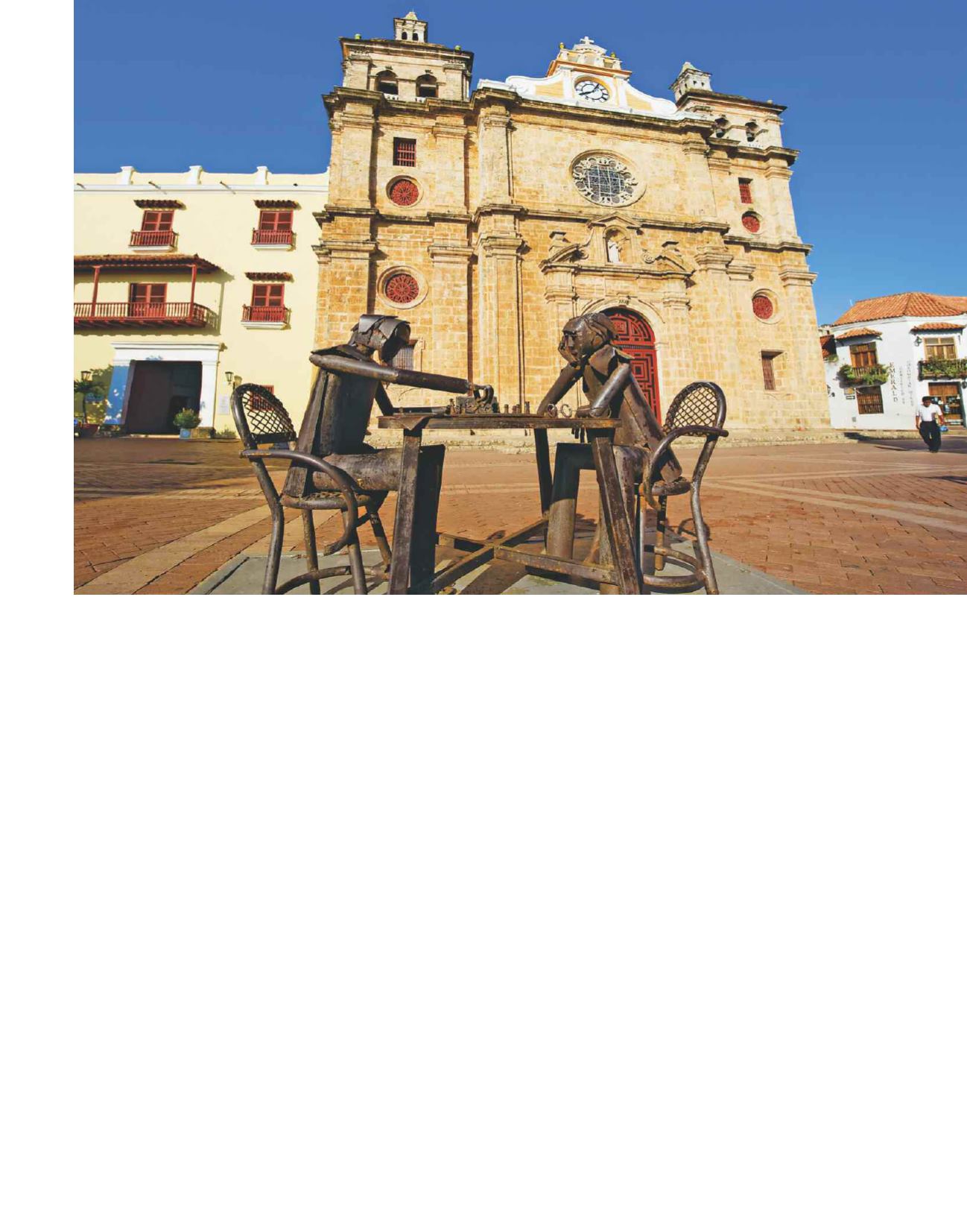

52
INTERVAL WORLD Summer 2015 IntervalWorld.com
“Oh, we have to check
this out,”
Michelle said.
I understand it doesn’t sound like much.
Outdoor seating …
what’s the big deal?
To be clear, though, the street in question is
not some boulevard that’s been permanently closed to traffic and
transformed into a pedestrian-friendly walkway. Less than two hours
before we sat down, we’d sauntered past the same spot and wit-
nessed a taxi cut the corner so tight that the rear tire screeched
against the same curb that Alfredo, a big gentleman with glasses
and a penchant for horizontally striped polo shirts, has to step off
to bring us another round of Aguila.
I admit that the first few times I saw headlights approaching the
intersection, I girded myself, ready to grab Michelle and dive full
Hollywood-style for the sidewalk. But then Alfredo sidled up to our
table with a pint-size bottle of Aguardiente Antioqueño, three wide-
rimmed shot glasses, and a bowl of limes. Aguardiente is regarded
as the national liquor of Colombia. It’s distilled from sugarcane and
very light. Alfredo poured three servings, raised his glass, and said,
“
Bienvenidos a
Cartagena.” I pulled out my wallet, but he stopped
me. “
Gratis, amigo
,” he added.
Three things happened thanks to that spontaneous exchange:
I stopped watching for headlights, we missed dinner, and, most
importantly, we learned that the most rewarding way to experience
Cartagena is to simply show up and see what happens.
Open-Ended Itinerary
Cartagena was founded in 1533. In 1586, work began on the military
fortifications that transformed the settlement into a Spanish colonial
stronghold. Today, that area is known as Old Town. Essentially, it’s
made up of three neighborhoods, two of which, El Centro and San
Diego, remain almost completely encircled by the original walls —
Las Murallas — and blend rather seamlessly into each other. The
other is the up-and-coming, bohemian Getsemaní. The entire district
is on UNESCO’s World Heritage List.
And there are historic highlights to be sure. The spired clock
tower marks what used to be the primary entrance to the walled city.
The Convent and Church of San Pedro Claver as well as the Church
and Monastery of Santo Domingo are stunning. The Palacio de la
Inquisición, once a palace and now a museum, offers a glimpse at
the region’s innovative — and sometimes brutal — beginnings. And
the nearby Castillo de San Felipe de Barajas fortress is particularly
fascinating.
All of these attractions should be on your formal itinerary, but so
should wandering around El Centro and San Diego with no plan
whatsoever, because that’s when you might happen across your own
Alfredo. (I’ve yet to see him mentioned in any guidebook.) To that
end, we set out the next morning with just one item on our agenda:
Get lost in Cartagena.
It didn’t take long. Less than 10 minutes into our journey, Michelle
stopped. “Weren’t we just on Calle de la Moneda?” she asked.
“Yes.”
Robert Harding/Glow Images; Glow Images; J.B. Bissell



















